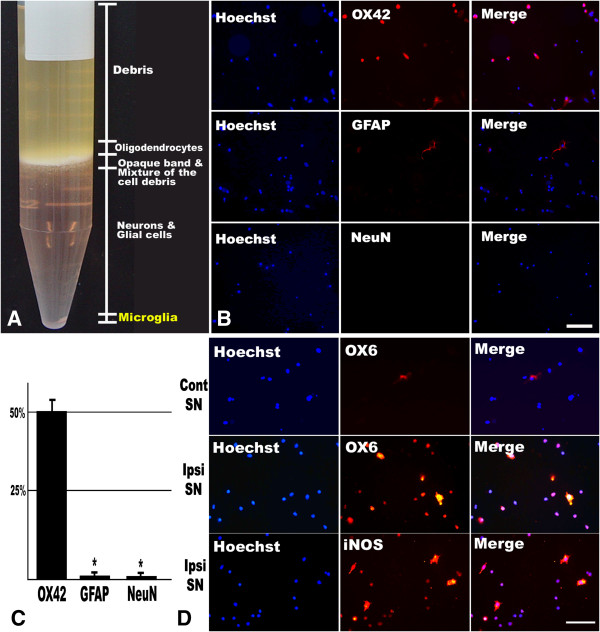Figure 3.
Isolation of microglia from adult rat mesencephalon using density gradient fractionation. (A) Cellular pool from the midbrain of 10-week-old Wistar rat using OptiPrep step gradient separation method. The fraction and cellular designation were based on the previous study [30]. Note the pellet at the bottom that contains microglia. (B) Double immunocytofluorescence labeling of Hoechst (nucleus) and one of the microglial (OX42), astrocytic (GFAP), and neuronal (NeuN) markers using primary cultured cells obtained from the pellet in (A). Scale bar represents 100 μm. (C) Semi-quantification of the number of OX42-ir, GFAP-ir, and NeuN-ir cells against Hoechst positive nuclei. The results are expressed as the percentage of the number of OX42-ir, GFAP-ir, and NeuN-ir cells to the total number of Hoechst-ir nuclei. *P < 0.05 compared with value from OX42-ir result (ANOVA with post hoc Student’s t test). (D) Immunocytofluorescence of OX6 and iNOS in primary cultured microglia originated from the contralateral (Cont) or ipsilateral (Ipsi) SN at 7 dpl. Microglia cultivated from the ipsilateral SN are highly immunoreactive with OX6 and iNOS, meaning that they are highly activated and produce high level of reactive nitrogen species. Scale bar represents 20 μm.

